Banded Ground-Cuckoo stake-out in Western Ecuador.
Banded Ground Cuckoo coming to hand outs right now.
I am sure you have already heard about one of the most exciting stake-outs of birds this year.
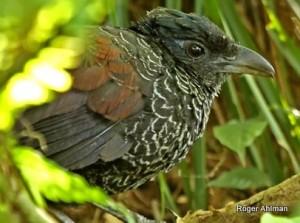
There is a Banded Ground-Cuckoo attending army ant swarms and coming around for hand outs at the relatively new reserve and research station Un Poco de Choco on the west slope of the Andes not far from San Miguel de los Bancos in the Mindo area. I was keen to try to find out more to be able to organize a trip here in early January, so I thought I’d find out a bit more by interviewing some key players in this story. There are two interviews. One interview with Roger Ahlman who was one of the first birders who visited the area when the word was out. And another interview with Nicole Büttner, who is one of the people behind ‘Un Poco de Choco” reserve. Nicole will let us know how to visit. Enjoy!
Roger Ahlman interview
Q.What are your previous experiences of Banded Ground Cuckoo? How many places have your search for it? Any particularly close shots.
I have been too close to this enigmatic bird too many times to be good for my mental health. First was in Esmeraldas in 2003 when very few people had ever seen it. I heard one snapping its bill near an antswarm. I had a clear stretch of trail in front of me and sat down hoping it would cross the trail but it got silent. After some time I gave up assuming it had gone the other way. I sat down in a clearing a bit lower down and soon heard the Cuckoo snapping its bill on the other side of the trail, having crossed it behind my back! Next time was at Bilsa, a remote place in southern Esmeraldas province. This is the best site for the bird and the local guides were sure we were going to see it. We first heard one singing and the local guide imitated its song and it came closer, just 5 meters away from me and I didn’t see a feather before it moved away. We heard another three birds but didn’t see it. Someone else at the station was strolling on a trail and one was just standing there and he took some pictures with a point-and-shoot camera – and he wasn’t even looking for it! A year later I was back at Bilsa but didn’t even hear it.
Q. How did you find out about the Ground Cuckoo at Un Poco de Choco?
This was a coincidence but shows how nice it is to share your sightings online. The owner of this biological station, Nicole Büttner, had just been to an ornithological congress in Mindo and there heard about a database where one can input sightings. A couple of weeks later she found the Cuckoo just next to the station at an antswarm and input her sighting. I happened to be surfing around the net two days later and saw this sighting without a location. After some searching I found Nicole’s website and station and assumed it was there, so I wrote to her asking about further sightings and possibilities to visit. She kindly wrote back that she had seen it again and that I was welcome to visit. A few quick calls to some friends in Quito that didn’t hesitate to come along and we were off. Nicole had mailed me in the morning that she had seen it again, so expectations were high.
Q. Describe your encounter?
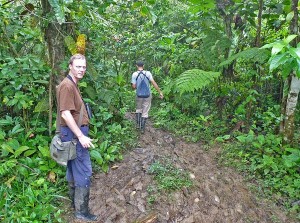 We arrived after lunch and inquiered Nicole about the sightings etc. Soon we started to drift off in different directions looking for both ants and Cuckoo, this turned out to be an embarrassing mistake… Of course the Cuckoo showed up at the crime scene when we were about as far away as we could possibly get. Wilo, Nicole’s husband, came running for us saying that the Cuckoo was back by the house. A quick but long run took us back to the station but of course the Cuckoo was gone and we were tripping with sweat and generally feeling awful. The rest of the afternoon gave no further encounters and we enjoyed nice food and company at the station for the night.
We arrived after lunch and inquiered Nicole about the sightings etc. Soon we started to drift off in different directions looking for both ants and Cuckoo, this turned out to be an embarrassing mistake… Of course the Cuckoo showed up at the crime scene when we were about as far away as we could possibly get. Wilo, Nicole’s husband, came running for us saying that the Cuckoo was back by the house. A quick but long run took us back to the station but of course the Cuckoo was gone and we were tripping with sweat and generally feeling awful. The rest of the afternoon gave no further encounters and we enjoyed nice food and company at the station for the night.
The strategy for the next morning was clear; patrolling the short stretch of trail next to the station where the Cuckoo had been seen for the last few days. On my third poking into the trail around 7 am I saw the bird briefly as it slowly walked away. I blew the whistle and Jonas Nilsson and Charlie Vogt came running and we had some more fleeting glimpses. A short while later I found it again but this time it came to us and perched on a log allowing the first of many pictures. Rudy Gelis was still missing but the Cuckoo was confiding and showed very well on and off. After more pictures and fantastic views for all of us, we sat down for breakfast. Just when the coffee was poured into our cups, I spotted the Cuckoo from inside the station standing in the open, wings drooping and tailed fanned obviously sunbathing! Breakfast was aborted and cameras firing away. Over the next couple of hours we enjoyed many gripping views and could confirm that there were actually TWO individuals, sometimes chasing each other on the trail just in front of us. Needless to say, but we were on a high!
Q. What other birds do you see at Un Poco de Choco?
While looking for the Cuckoo we found several things that were new for the biological station or generally good birds. Scaly-throated Leaftosser, Blue Seedeater, Brown-billed Scythebill, Yellow-margined Flatbill, Guayaquil Woodpecker to mention some. Others have subsequently seen Crested Guan etc.
The place is situated at 1200 m and have trails down to the Pachijal river at 950 meters, so many foothill species occur here.
Q. Would the site be good for Long-wattled Umbrellabird and Black-tipped Cotinga as well, perhaps?
Long-wattled Umbrellabird has been recorded at the site but there are better places along the traditional west slope. Black-tipped Cotinga is better seen in northern Esmeraldas, specially along the road to the Awá reserve. I found this new road last year and have told other bird-guides here in Ecuador and we all say – best Chocó birding in Ecuador!
Q. Awa reserve sounds interesting. How does one get there. Is it far from the main Mindo/San Miguel de Los Bancos area?
I first found out about the trail into the Awá indian reserve in northern Esmeraldas in 2003 and saw several good birds there. I spread the rumour about the place in my extensive trip report from that year and others went there. It was quite muddy so it was a bit difficult. Last year I was up there with a client and we were intended to do the trail when locals told me the trail is no longer in use as they have made a road into the reserve. That sounded better and we tried that and had fantastic birding with most of the Chocó tanagers etc. I told other guides here in Ecuador about it and they went there and said the same thing – best Chocó birding in Ecuador!
This area is in northern Esmeraldas province so quite a long way from the traditional west slope tours to the Mindo-Tandayapa areas, but well worth the trip, specially if combined with Playa de Oro and the Chiqal road (for Star-chested Treerunner and Purplish-mantled Tanager). The road to the reserve branches off from the main Ibarra-San Lorenzo road to the north, about 6 km west of Alto Tambo. It is muddy so rubber boots are needed and a scope is useful too.
Q. What is your Ecuador list now?
My Ecuadorian list following SACC is 1468 out of which 20 are heard only. For the latest ranking go to www.avesecuador.com and click on ‘ranking’
Feel free to update yourself there.
Q. What is the next big target in Ecuador for you personally?
I’m missing many things in the Amazonian part of Ecuador, many of which I have seen in Peru. I have a long trip to Sani lodge and Napo Wildlife Center coming up in late november, so hopefully I can plug some holes then. Otherwise seeing Red-winged Wood-Rail would be great as I have heard it a few times. Yellow-eared Parrot would be another major highlight.
Nicole Büttner interview.
I am a German biologist, living in Ecuador for about six years now. During my studies I took part in a tropical ecology course in Brazil and I loved the rainforest. A year later I traveled to Ecuador to do an internship in the Amazon and I was even more fascinated by the diversity of this small country. In 2004, I came back to do the field work for my master’s thesis on hummingbird-pollinated bromeliads near Mindo. During that time I met Wilo, my husband. Well, and you can imagine the rest of the story. After graduating I came back to live in Ecuador for about a year. Wilo and I got married and I started to work as a nature guide in Mindo. And then we both had the idea of a project combining conservation with education and research. To make this dream come true, Wilo and I went to Germany and worked there for two and a half years.
Wilo discovered the bird one morning right next to the station. The army ants were swarming there and he noticed this big bird on the forest floor which he had never seen before. Wilo isn’t a birder, but he had seen the Cuckoo before on a poster. I was working with some students when Wilo came into the lab and told me about his sighting. He described the bird and when I showed him the Banded Ground-Cuckoo in the field guide, he was sure he had seen that one. I couldn’t believe it, because I knew this bird was very rare. But after a few minutes next to the army ants swarm I also saw it. We observed it for about an hour. Our presence didn’t seem to bother it, it even came to feed on a trail and we took some photos. In the same afternoon I put the photos on the database Roger mentioned. I knew that the bird was rare, but I honestly didn’t know that it is normally so difficult to see and that even the majority of Ecuador’s best bird guides and ornithologists had never seen it.
We had about 70 people visiting so far. Roger came with Jonas Nilsson, Charlie Vogt and Rudy Gelis. A lot of other guides like Iain Campbell and Sam Woods from Tropical Birding, Dusan Brinkhuizen and Jane Lyons from Mindo Bird Tours, Renato Espinosa from Pululahua Hostal, Juan Carlos Calvachi, Edison Buenaño, some of them came with tourists. Kevin Easley from Costa Rica came with two friends from the States, only to see the Cuckoo. Most of the bird guides from Mindo have been here, and not to forget Pancho Sornoza from the Jocotoco Foundation. Murray Cooper, Ecuador´s brilliant bird photographer visited us, too. He had been chasing the Cuckoo in Bilsa for seven days and only saw it three minutes. After the first five minutes here with our Cuckoo, he already got better photos than the ones he got in Bilsa.
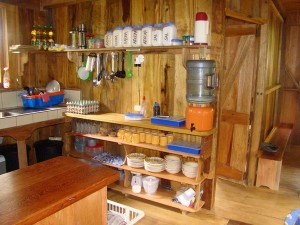 So far I have registered 227 different bird species in the reserve, but there might be more because I am not (yet) an expert in birds.
So far I have registered 227 different bird species in the reserve, but there might be more because I am not (yet) an expert in birds.
We regularly see Spotted Nightingale-Thrush, Tawny-breasted Flycatcher, Rufous-throated Tanagers, Chocó-Trogon, Pacific Tuftedcheek and we regularly hear Chocó-Screech-Owl, Wattled Guan, Blue-fronted Parrotlet, Dark-backed and Rufous-fronted Woodquails. Moss-backed Tanagers, Long-wattled Umbrellabird, Toucan Barbet, Black-chinned Mountain-Tanagers and Plate-billed Mountain-Toucans can be found quite easily on the road leading to the reserve.
Well, the most important service we are providing at the moment is that we are feeding the Cuckoos. We have got three individuals and two are coming out to be fed. The immature individual even feeds grasshoppers from my hand. Apart from that we have got a few nice trails through the forest and a wonderful river for a swim. Birders can visit on a day visit, but we also provide lodging for those who want to spend the night or stay longer. Wilo is an excelent cook and we serve breakfast, lunch and dinner.
Q. What comfort details are there now, and if improvements,such as electric light, hot showers, private baths and internet, are to be made when will they happen?
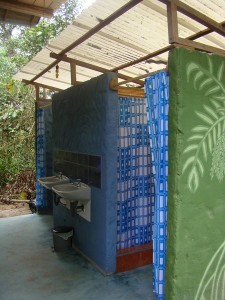 Visitors can be lodged in the station’s house. We have got three rooms with bunk beds and also big beds. Outside we have got dry toilets in order to reduce water consumption. There are two hot showers next to the station. We don`t have electricity, but for those who really need to charge batteries etc. there is a generator. We even do have internet access (Wifi) which can be provided on request.
Visitors can be lodged in the station’s house. We have got three rooms with bunk beds and also big beds. Outside we have got dry toilets in order to reduce water consumption. There are two hot showers next to the station. We don`t have electricity, but for those who really need to charge batteries etc. there is a generator. We even do have internet access (Wifi) which can be provided on request.You can visit the reserve either with your own transport or we can arrange a taxi picking you up in Quito (about 60$). There is also the possibility of taking a bus to Las Tolas or Tulipe and being picked up there (15$). Visitors can contact me for a detailed way description or information on the bus schedules and transport.
To visit the reserve you wouldn’t go to Los Bancos, before Los Bancos (shortly after Nanegalito) there is another road you’d have to take. From Quito it is a 2,5-3 hours drive, and about 1,5 hours from Mindo (or 2 hours form Los Bancos).
We charge 25$ for a day visit including breakfast. For those who want to stay overnight it’s another 25$ including dinner.
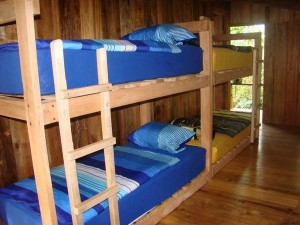 The easiest is to contact me via email: unpocodelchoco@gmail.com. More information about us, the reserve, the station, the birds and especially the Cuckoo can be found on our website: www.unpocodelchoco.com
The easiest is to contact me via email: unpocodelchoco@gmail.com. More information about us, the reserve, the station, the birds and especially the Cuckoo can be found on our website: www.unpocodelchoco.com
Q. What price if you want to stay two nights? You said on your website you don’t charge in one has to come back a second day to see the Cuckoo.
Yes, we don’t charge the entry fee again, so if you’d stay two nights that would be a total of 82$ (incl. two dinner, two breakfasts and one lunch).
Thanks Nicole and Roger for those accounts. As for myself, I have just re-written our 20 Antpitta twitch tour to Northern Peru and Ecuador to also fit in “Un poco de Chocó”. Hopefully, the Ground-Cuckoo will still be there in January. Join me!
Thanks to Roger Ahlman for the use of his excellent Banded Ground Cuckoo pictures.
——————————————————————————–
Gunnar Engblom
Mail: kolibriExp@gmail.com
Facebook: kolibriexpeditions
Twitter: kolibrix
Skype: kolibrixx

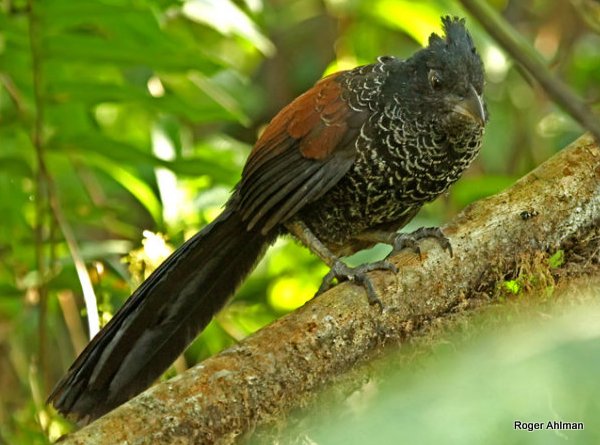
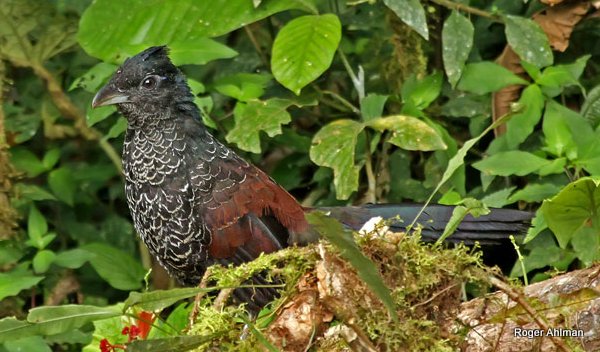
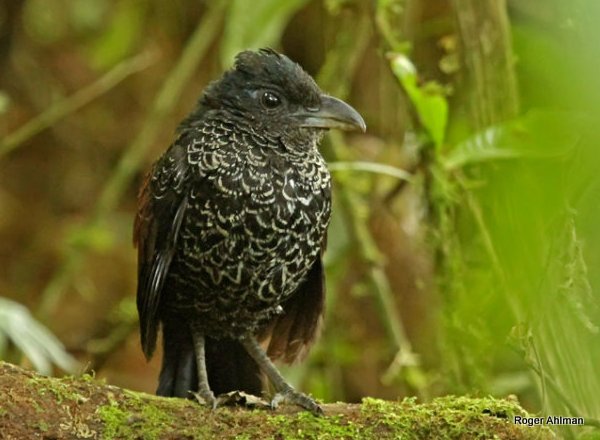
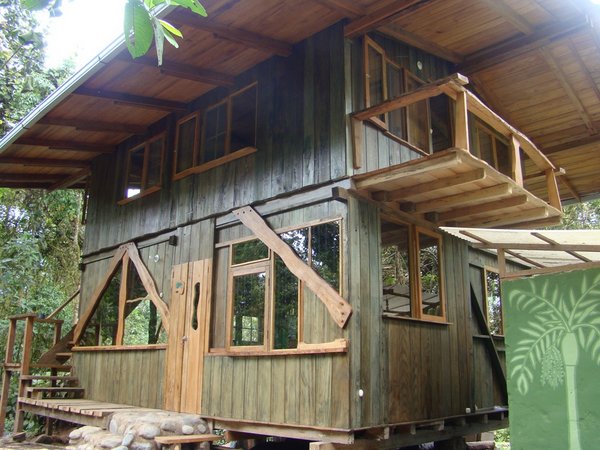
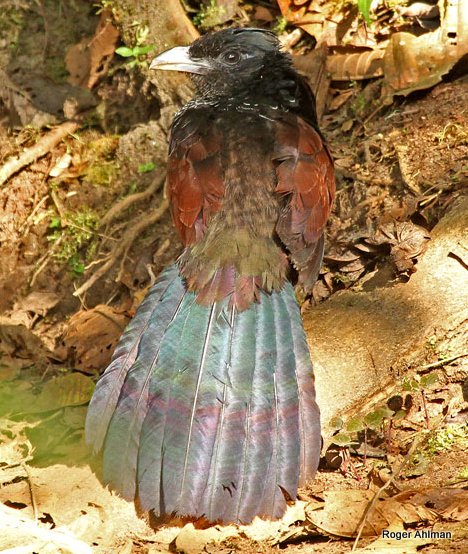
Fantastic bird that I’ll love to photograph sometime…
Gunnar: do they have feeders at the station (like fruit feeders for Tanagers and others?)… I bet that would be fantastic for us bird-photographers!
Good question Alex. I’ll ask and add to the blogpost
Any news regarding the feeders Gunnar?… I need to know…
OMG!!!!!!!!!!!!!!!!! have you seen this?: !!!!!!!!!
https://www.youtube.com/watch?v=oqq66AaOy2o
What lovely photos and video. Thanks for sharing!